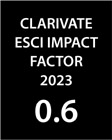Az Alföld infrastruktúrájának jellemzői és főbb fejlesztési feladatai
DOI:
https://doi.org/10.17649/TET.7.3-4.281Absztrakt
1. In matters of communal infrastructure, the underdeveloped situation of the Great Hungarian Plain in comparison with the national average decreased during the last half century.
a) Especially in availability of flats for housing this region is significantly approaching to the more developed macroregions of Hungary. The number of flats, the rate of construction of new or quasi-new flats was independent of, or even opposite to the population's incomes. This was partly because of the self-exploiting way of life, and partly because of the considerable state support following natural disasters. In matters concerning public utilities however, the handicap is still very strong. Despite the spectacular development from the very low levei, there is a great gap between the public utilities in the plain as compared with other regions. (Even among many towns the number of the flats with tap water is 18 times higher than those with sewerage.) In matters of the housing conditions in the broader sense (complex index consisting of size, equipment, public utilities), among the Great Plain counties the situation of Csongrád is the most favourable. Worst one is Jász-Nagykun-Szolnok; the first of the towns is Szeged and the worst is Kecskemét.
b) Within the communal institutional infrastructure the (quantitative indices, of the) availability of educational-cultural infrastructure shows quite an unfavourable picture of the Great Plain, and the professional structure of education is inadequate for the needs of the macroregion. Though there has been a considered improvement in the situation of health care, there are huge differences between certain areas and settlements, partly as a function of the distance from the medical universities.
c) In matters of retail trade infrastructure, the Great Plain is close to the national average, but the development took place with strong concentration. The rate of the number of public accommodation establishments in the Great Plain is unreasonably low.
In matters of the broader-sense communal infrastructure the most desperate situation can be observed in the small agrarian towns (the so-called Nagykunság and Hajdú towns). It is sad that the advantages of the clusters of settlements situated close to each other (offering the chances for cooperation) could not be exploited during the infrastructural developments. Ön the other hand, the infrastructural availability of the Great Plain villages is significantly better than that of the much smaller villages in the other parts of the country.
2. Within network infrastructure
a) in matters of the complex index derived from all the land transport partfal indices, the situation of the Great Plain is a bit less favourable. It is to be considered that between the levei of transport and general economic activity and infrastructure of the regions, there is a relationship only in the extreme categories.
b) In matters of telecommunicative infrastructure the Great Plain is strikingly less developed than the other parts of the country.
c) If we look at the energy transmission lines, the Great Plain is in a favourable situation. Most of the international transmission lines enter the country here. In the future, with possibly strengthening western orientation the advantage deriving from this situation will lose importance.
3. In the strategy of infrastructural development the special (regional and local) features should be taken into consideration as much as possible, also „agriculturefriendly", „tanya-friendly" and „environment-friendly" solutions are needed. The financial support of infrastructure can come from different sources and in different forms in the future, also modified by the unfolding privatisation process.
##submission.downloads##
Megjelent
Hogyan kell idézni
Folyóirat szám
Rovat
License
A folyóiratban publikálni kívánó szerzők elfogadják a FELHASZNÁLÁSI ENGEDÉLYBEN részletezett feltételeket.






